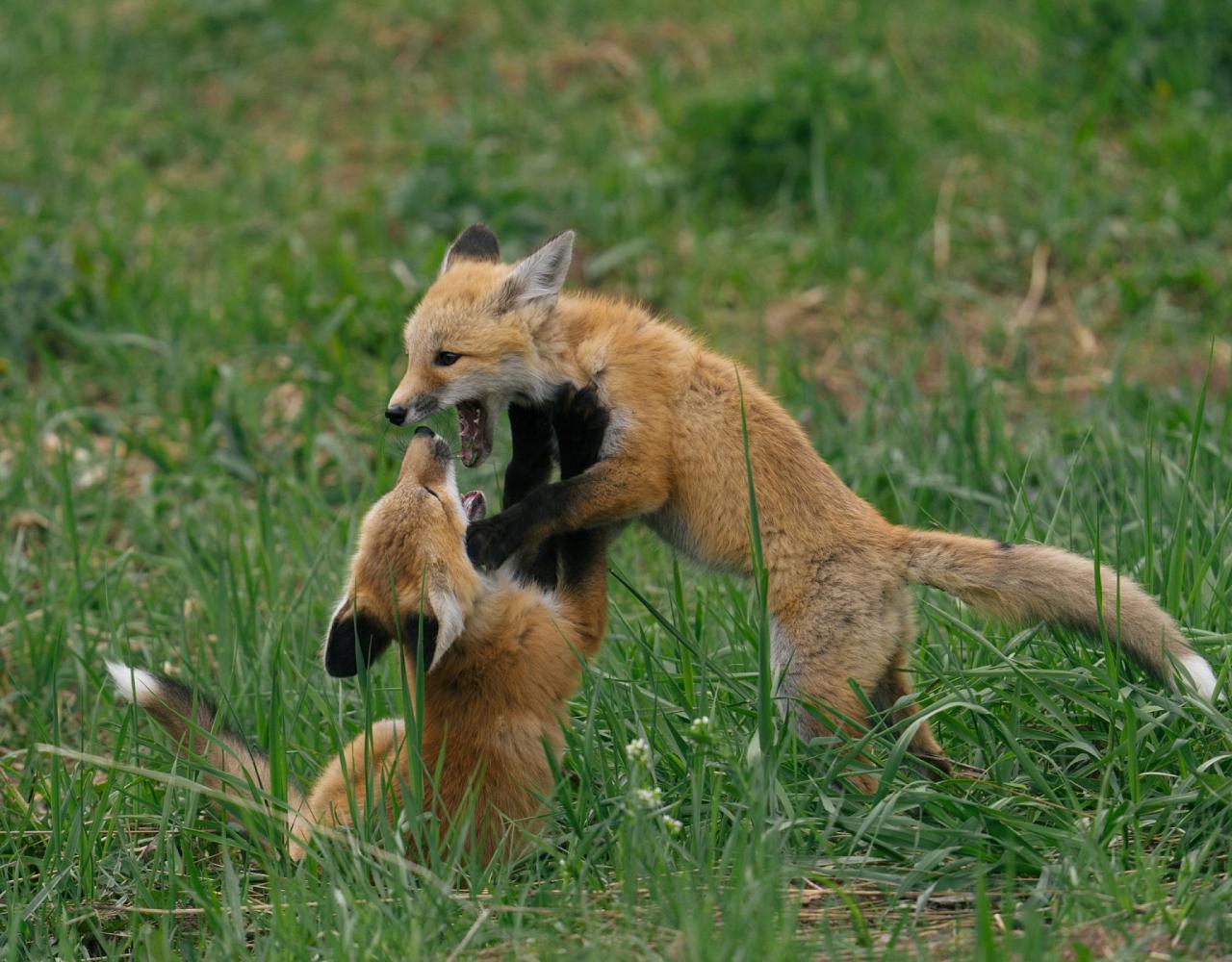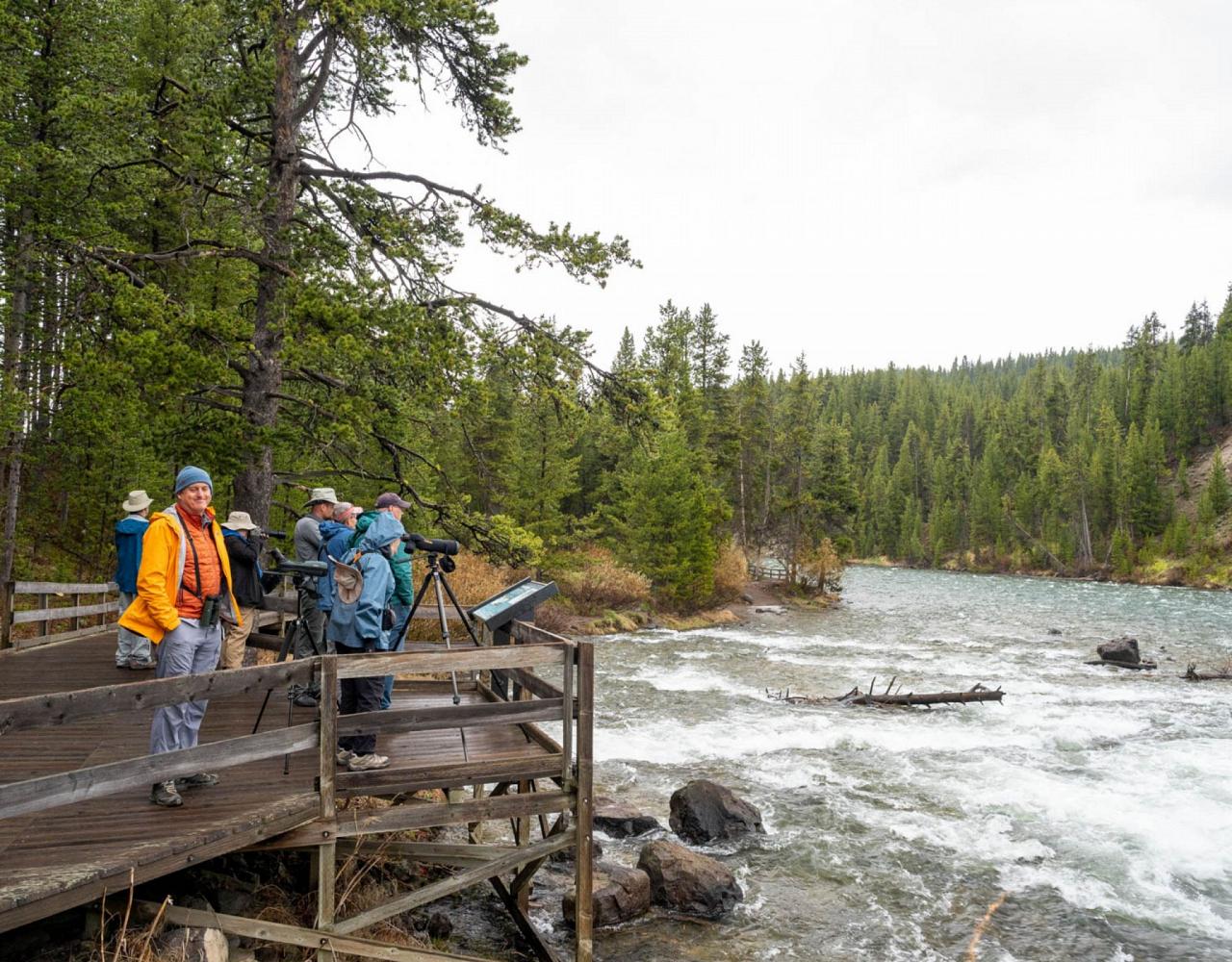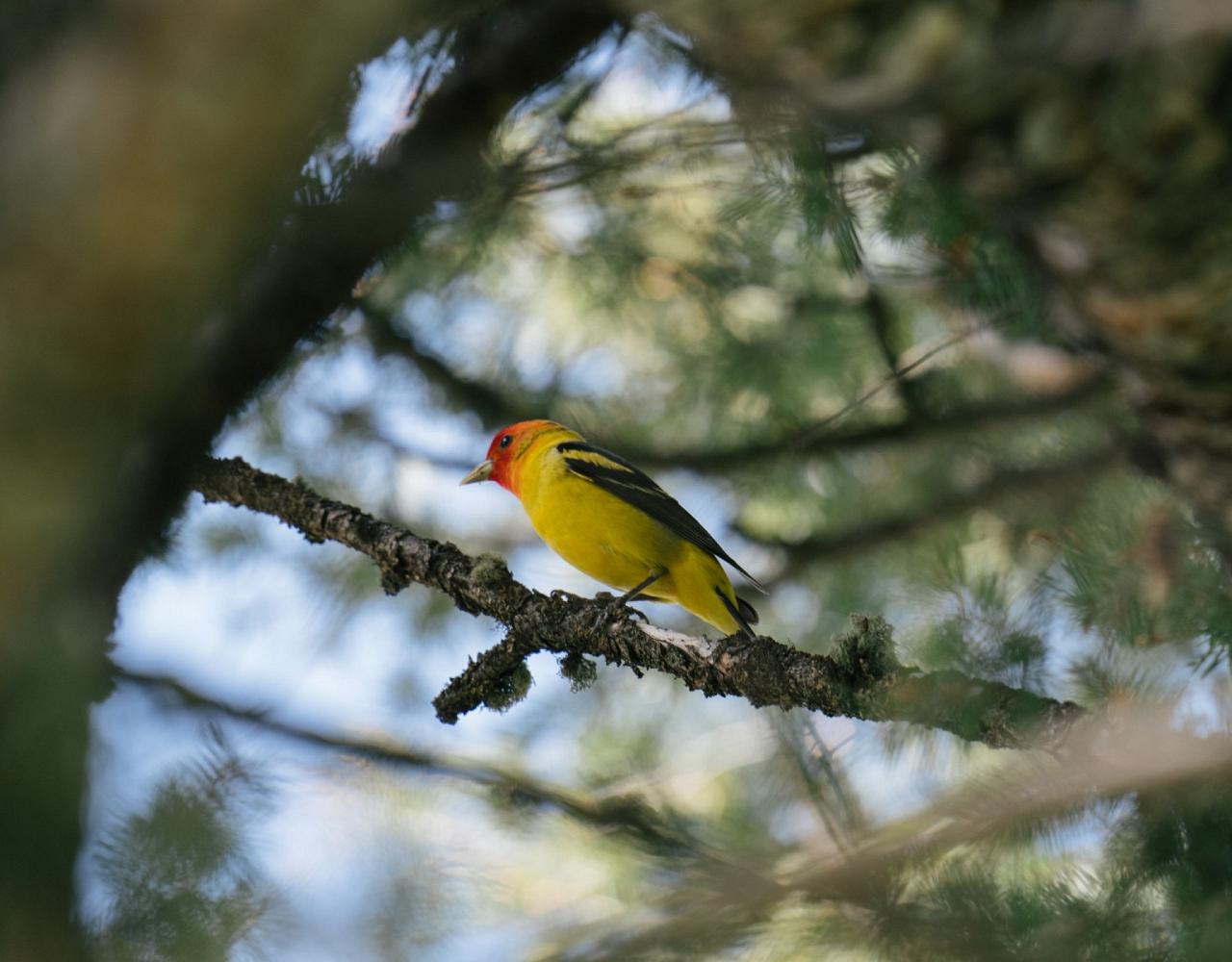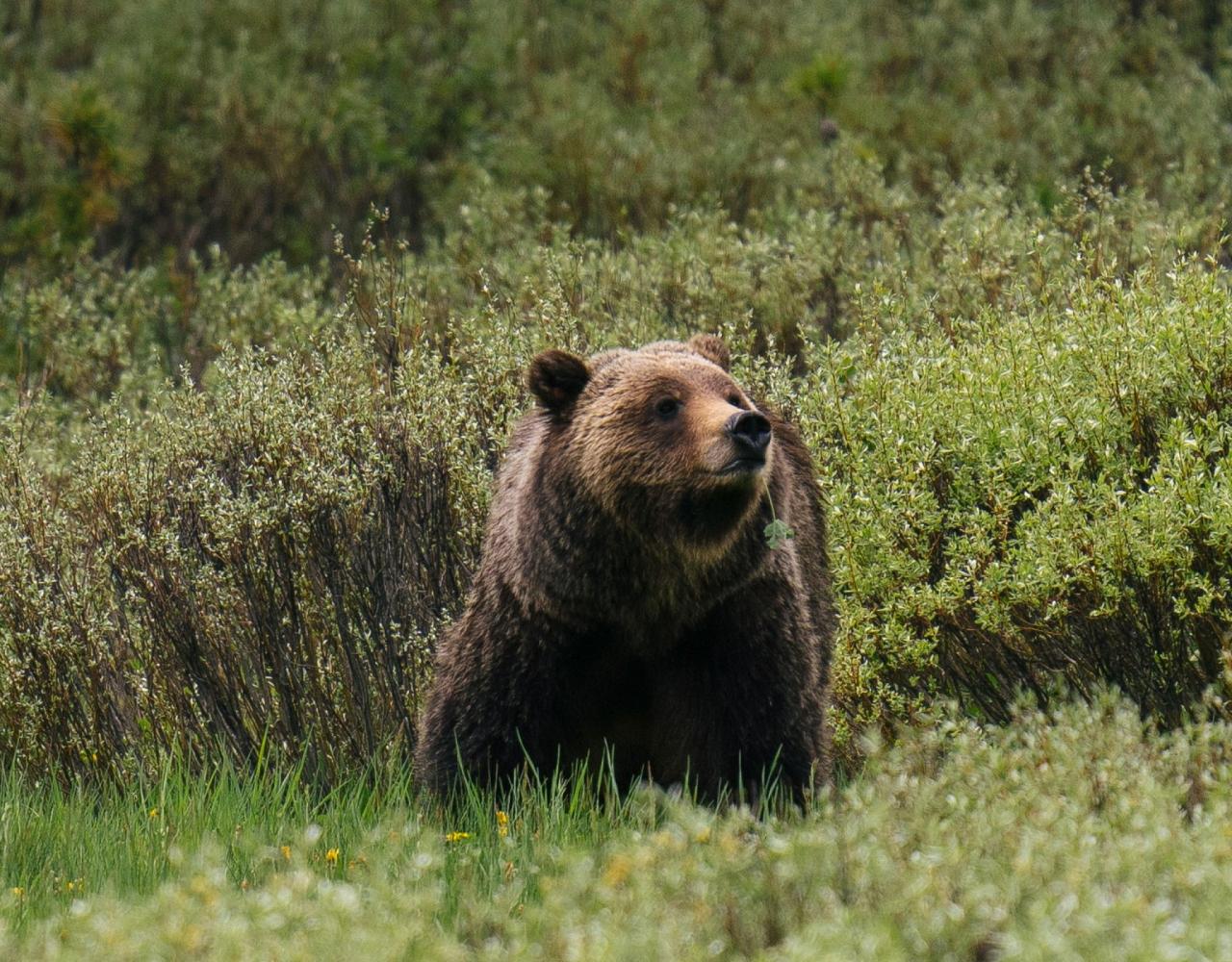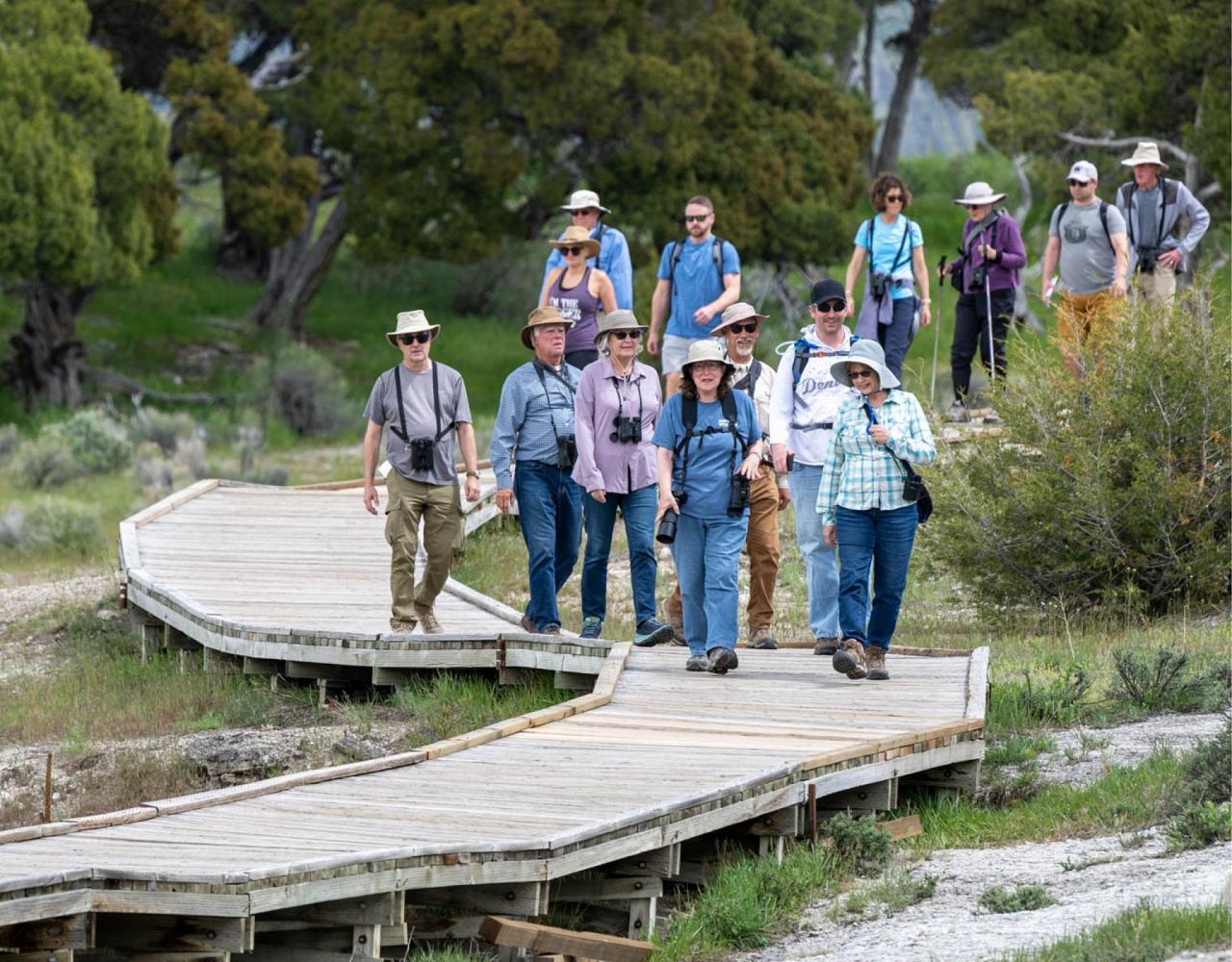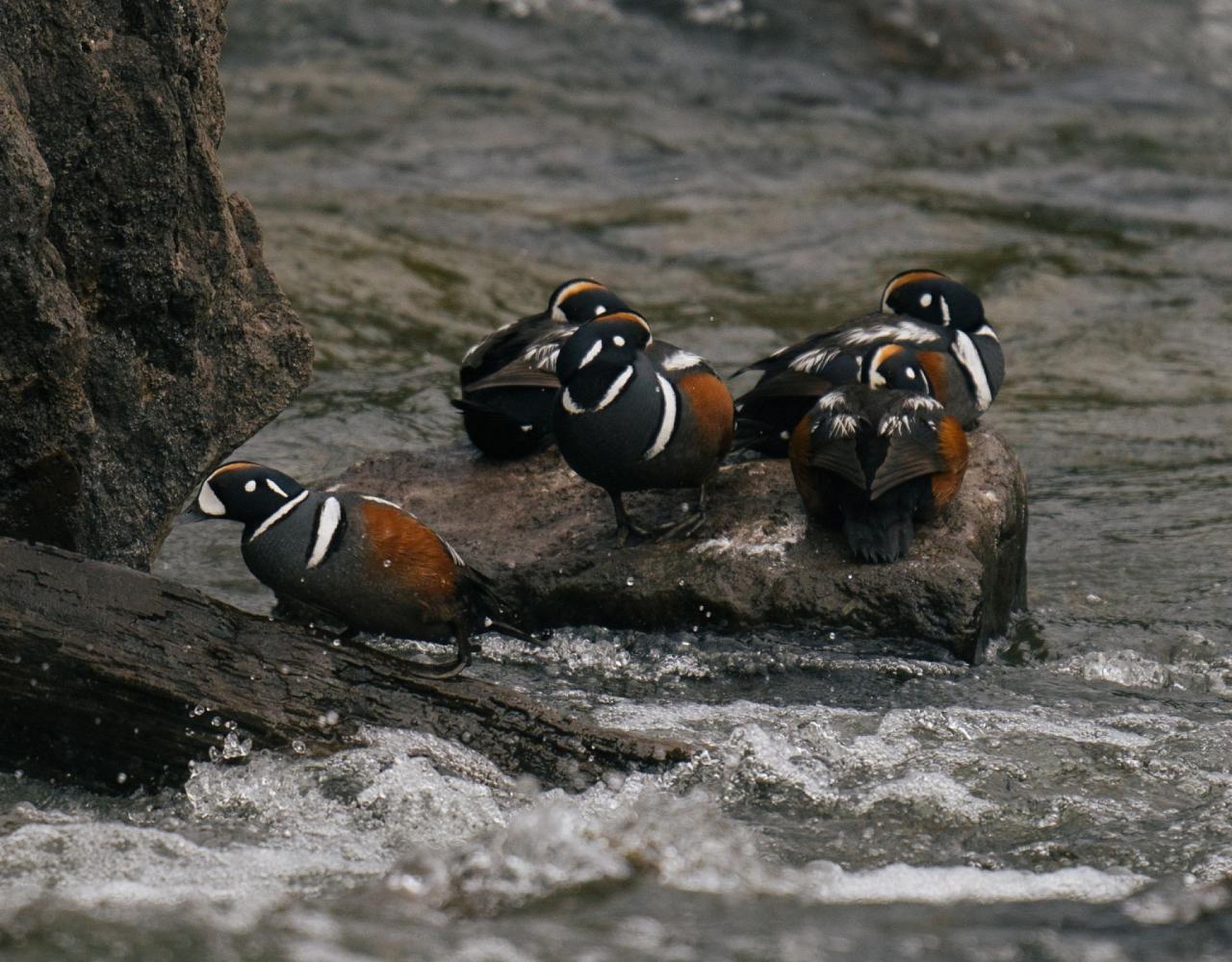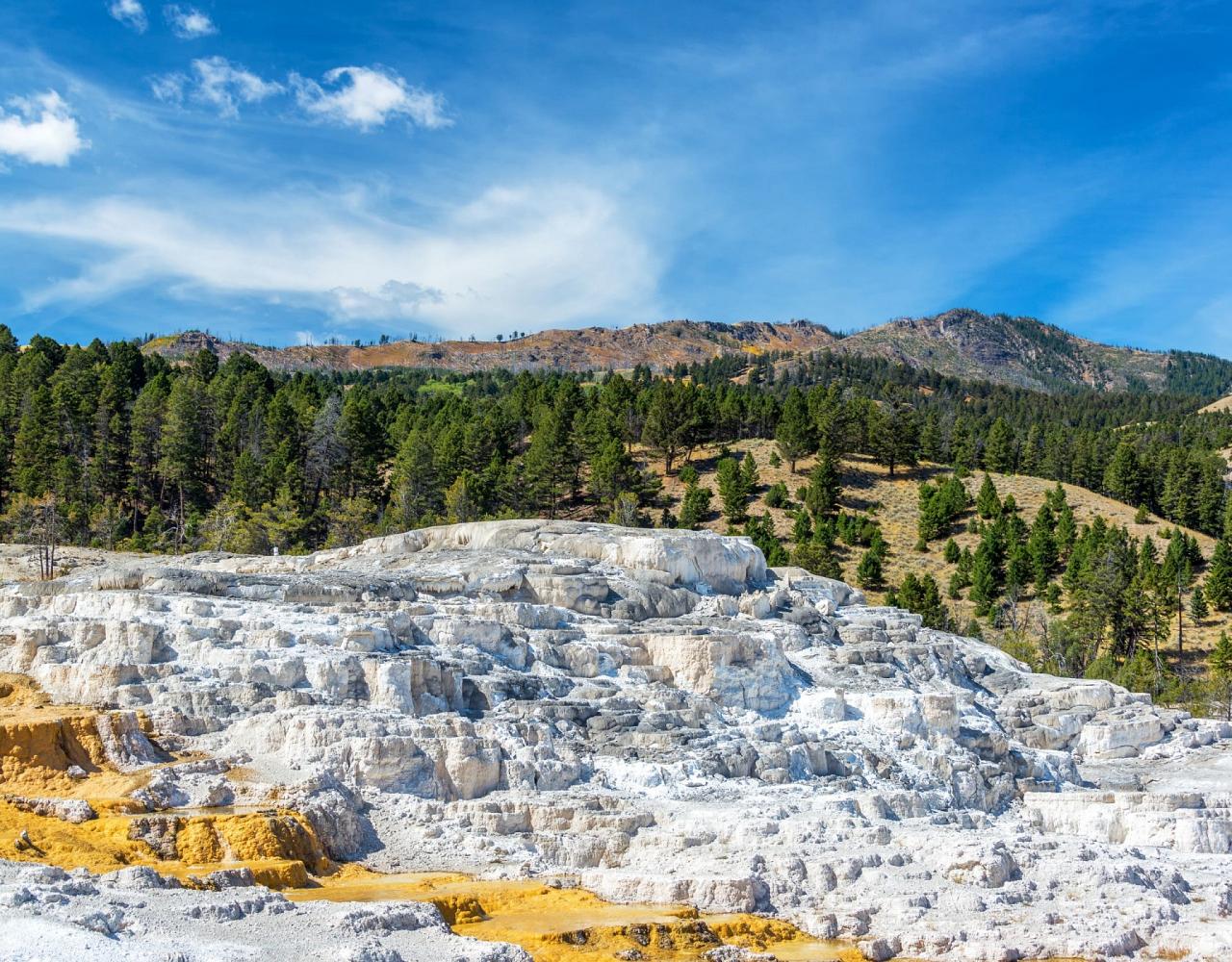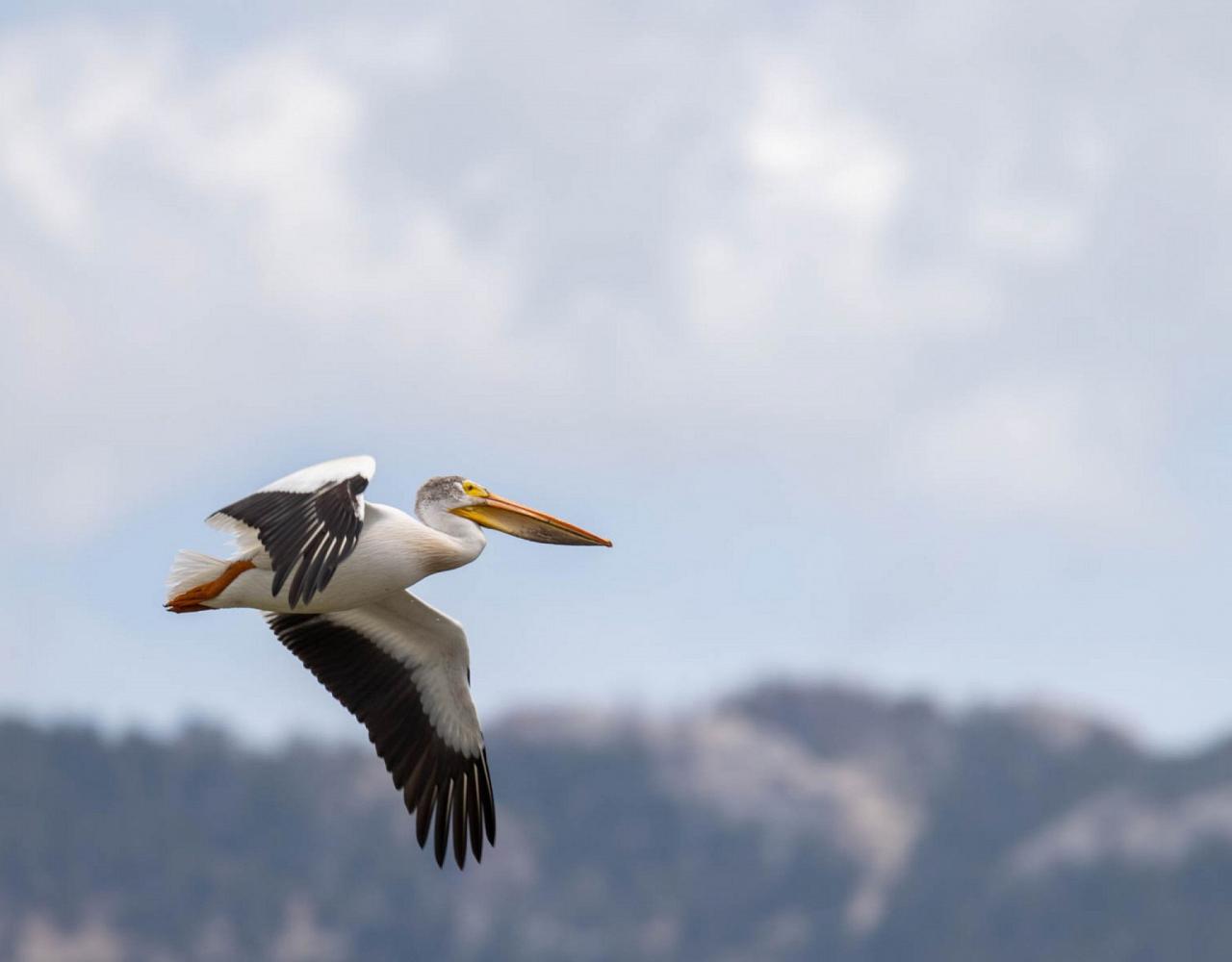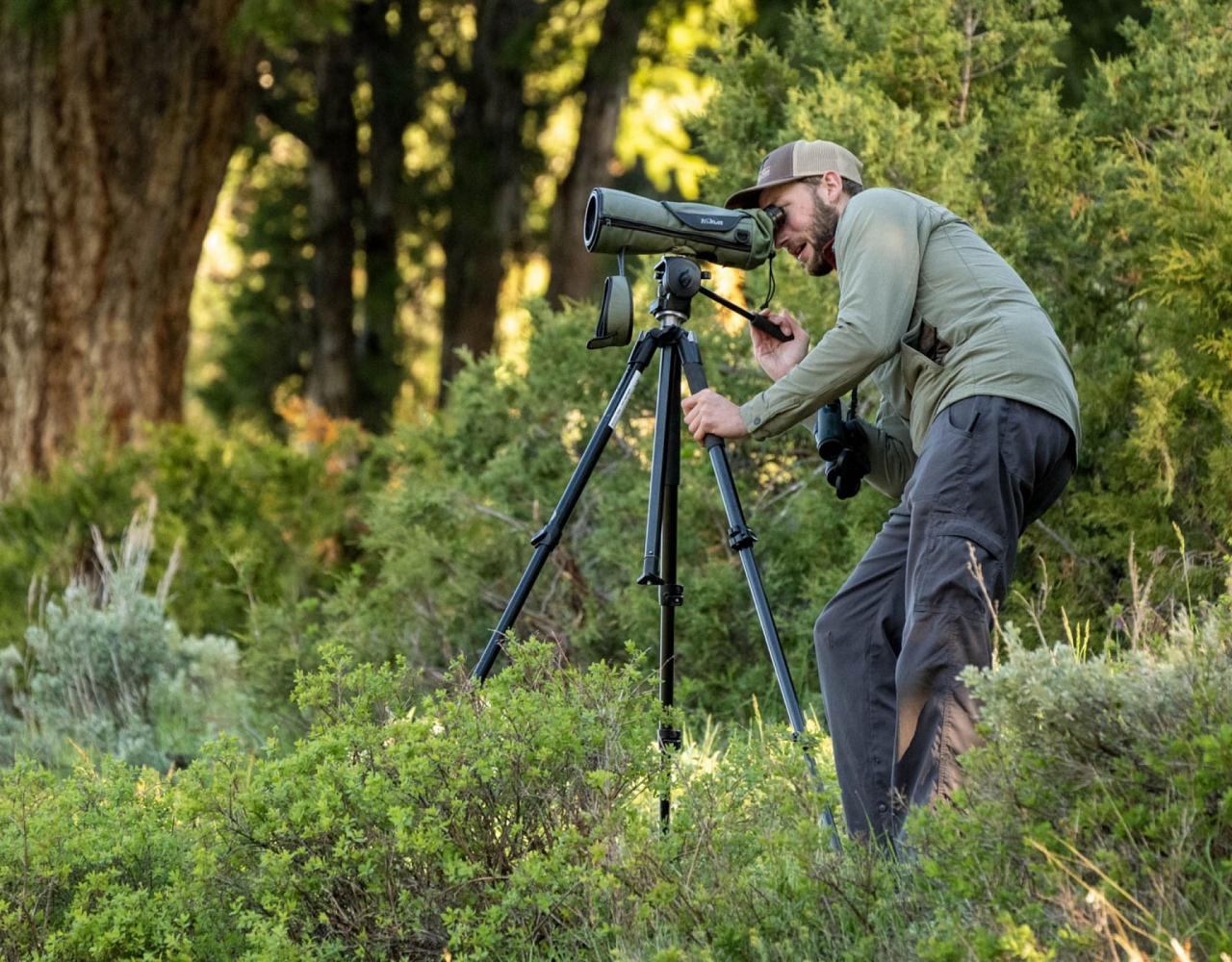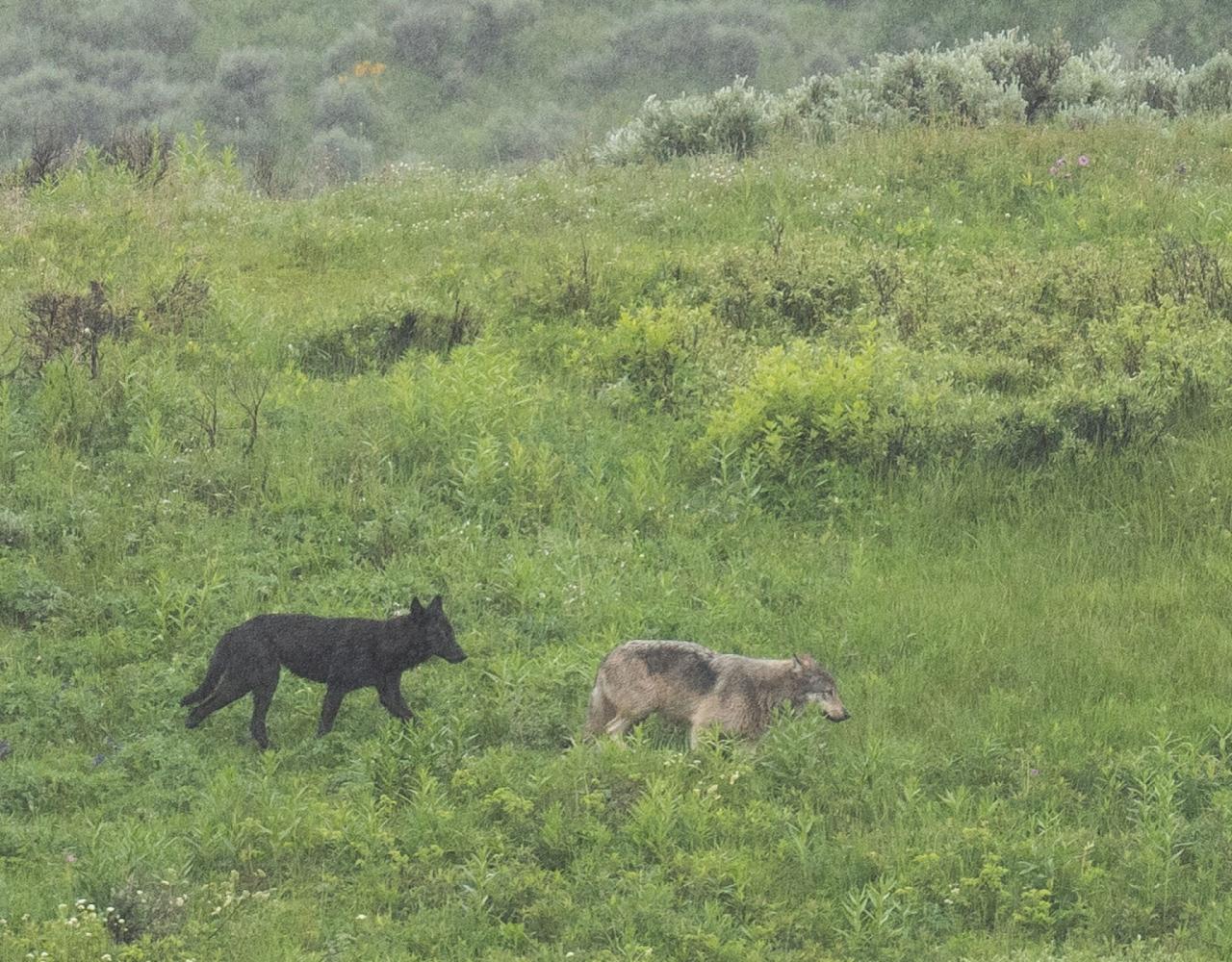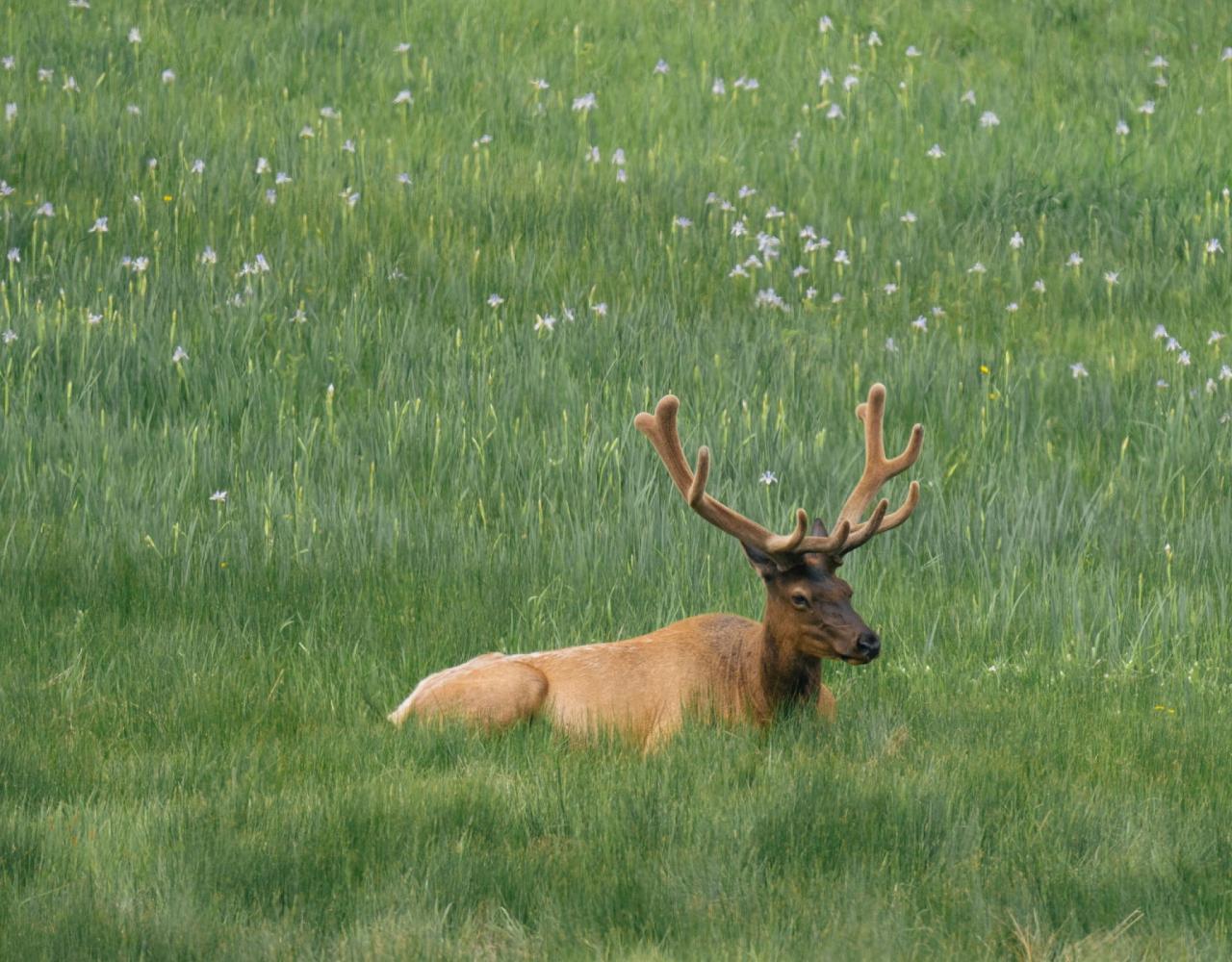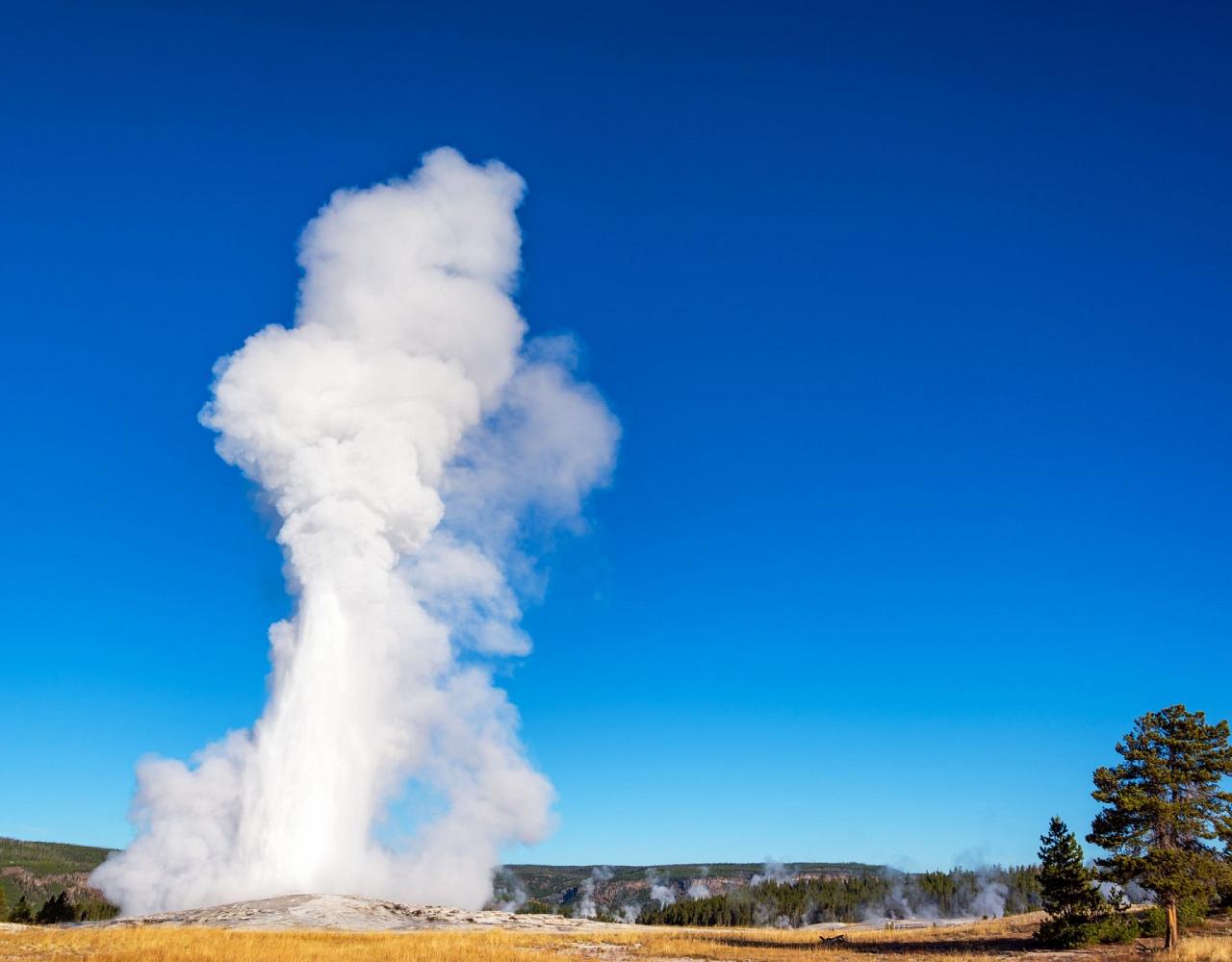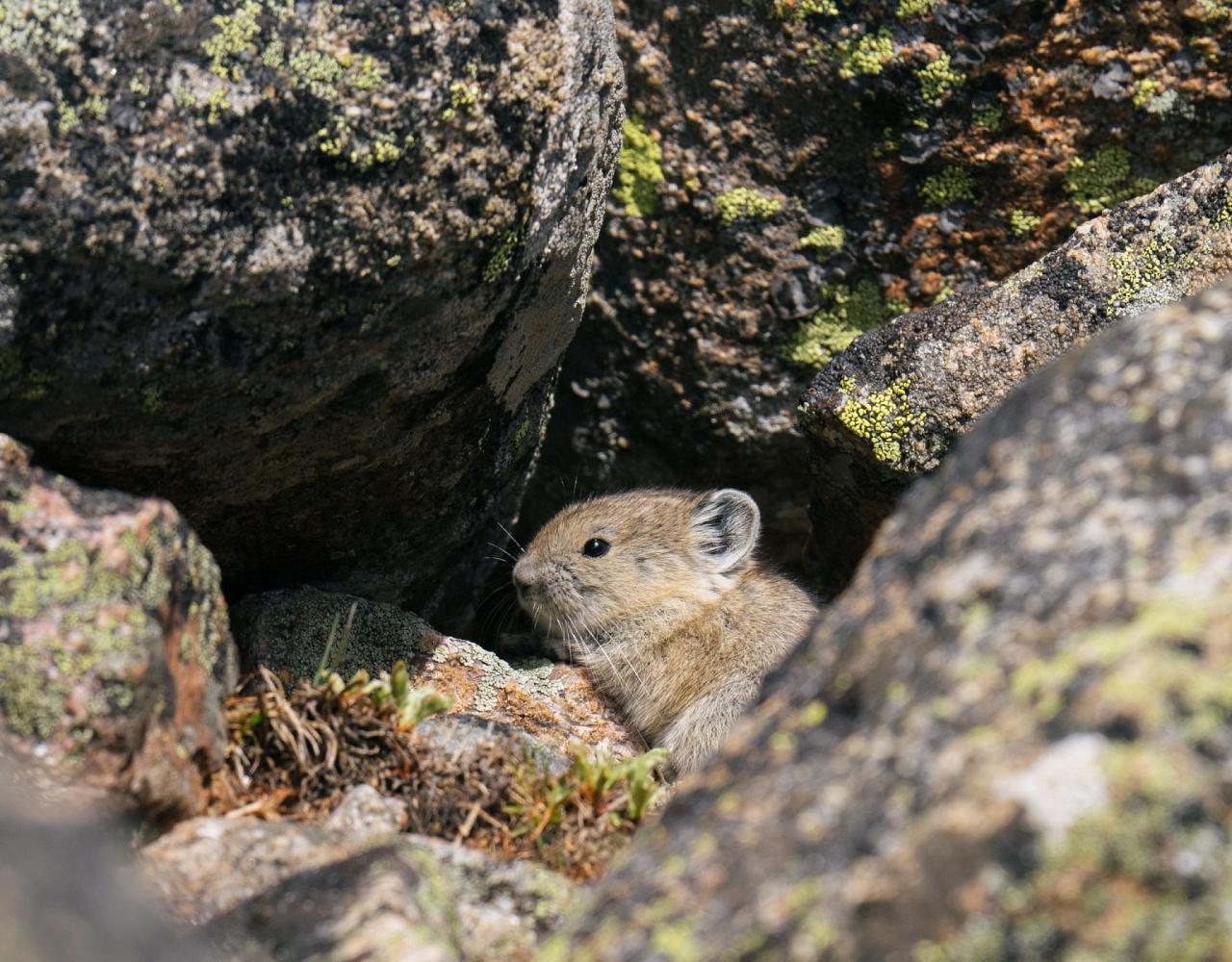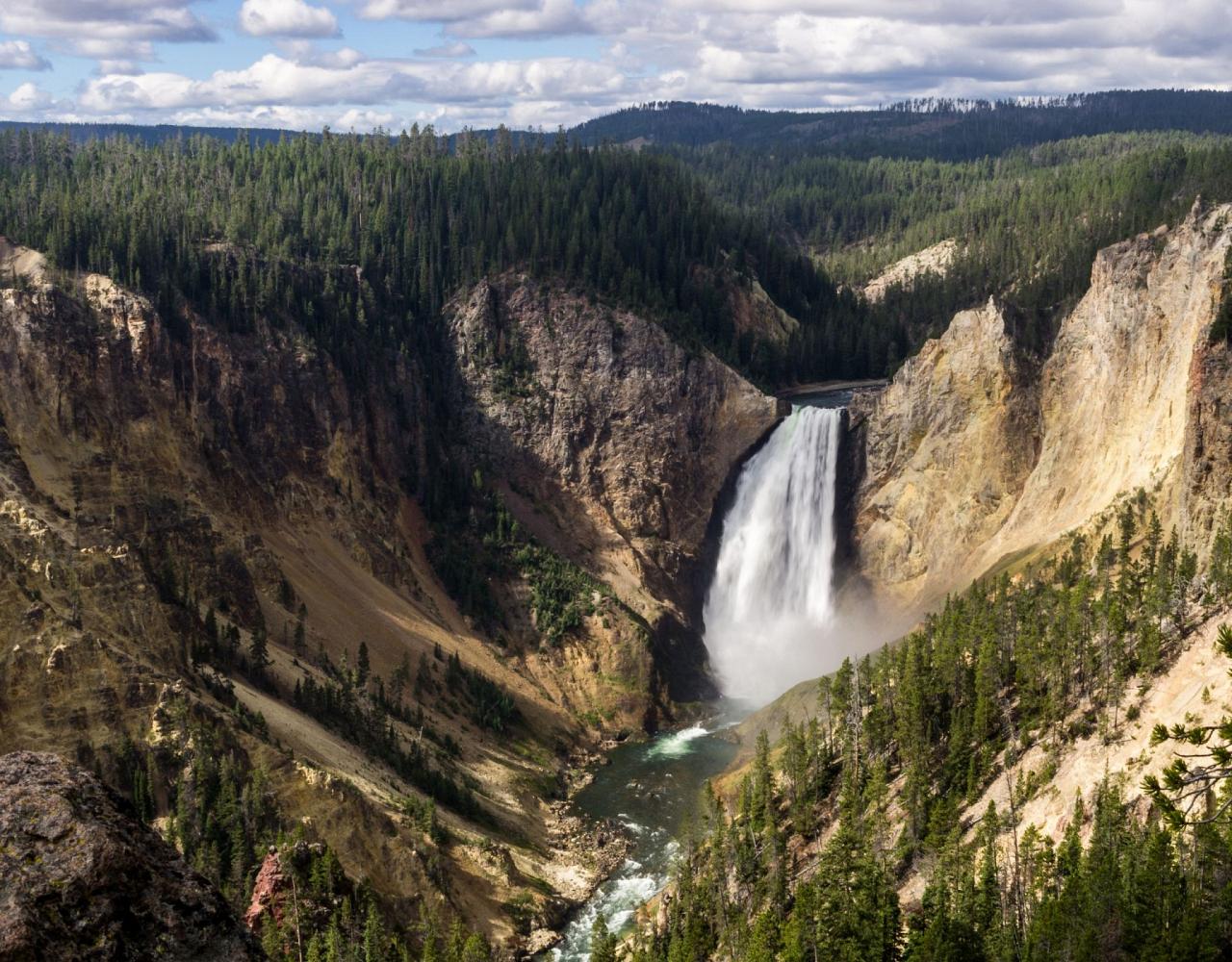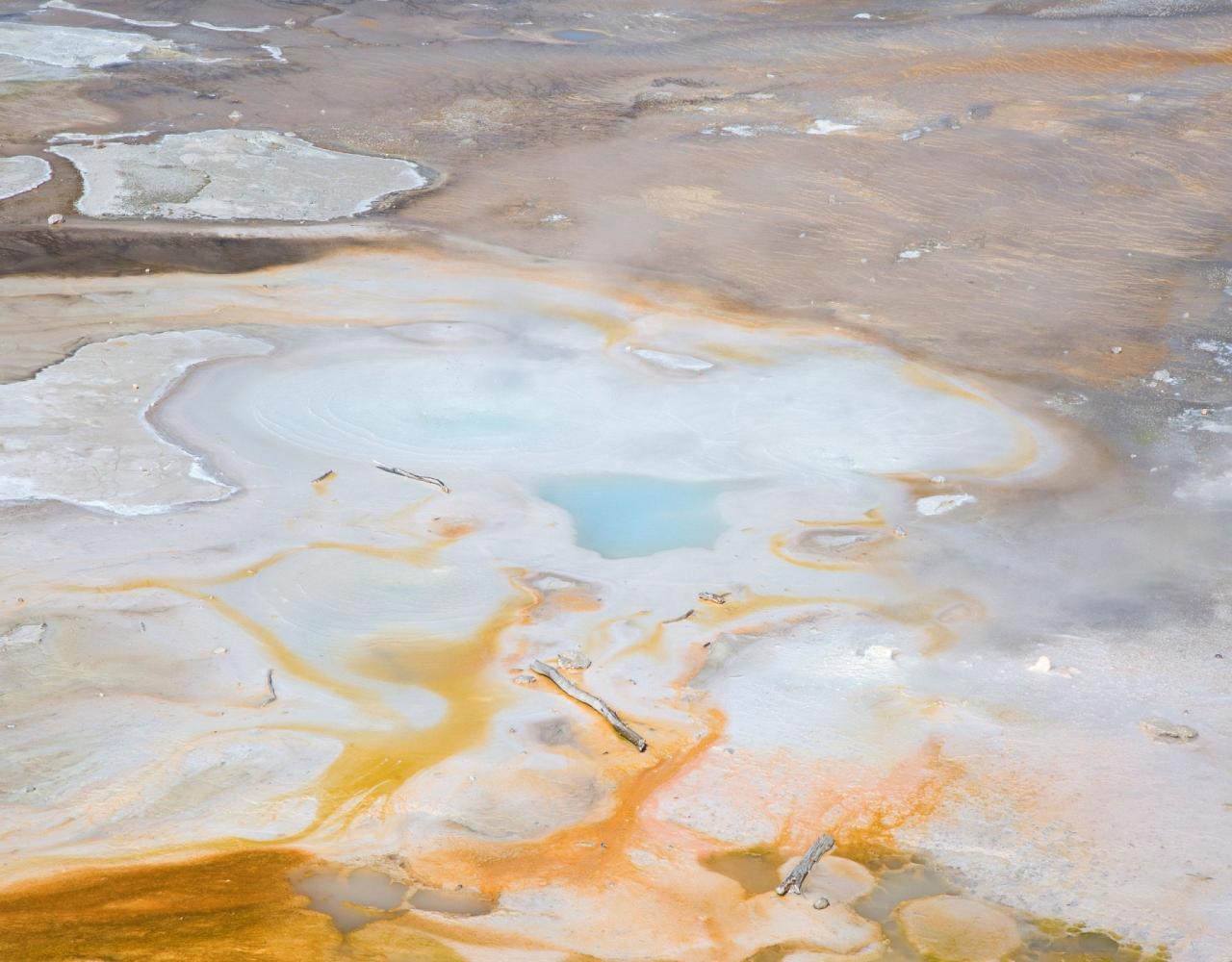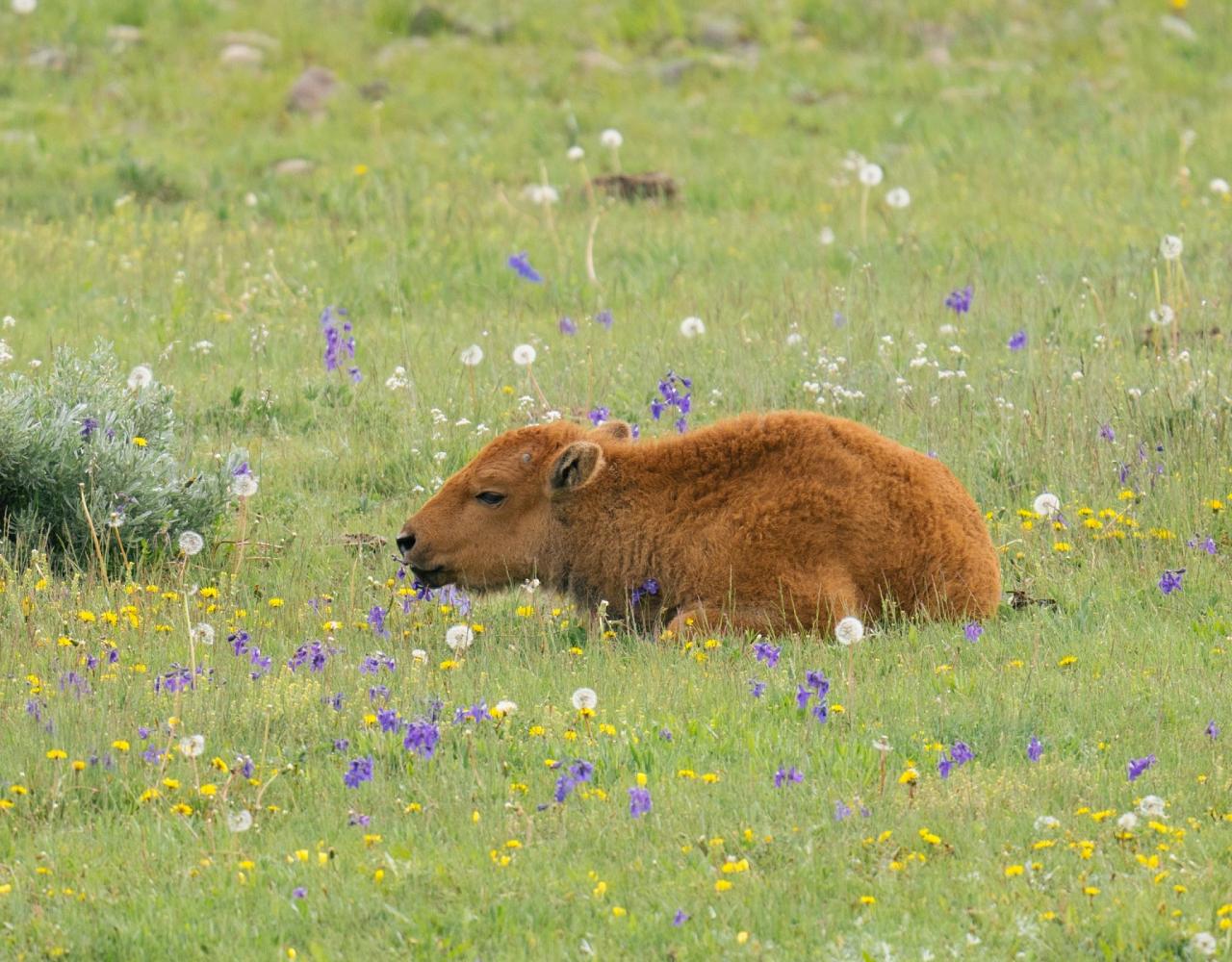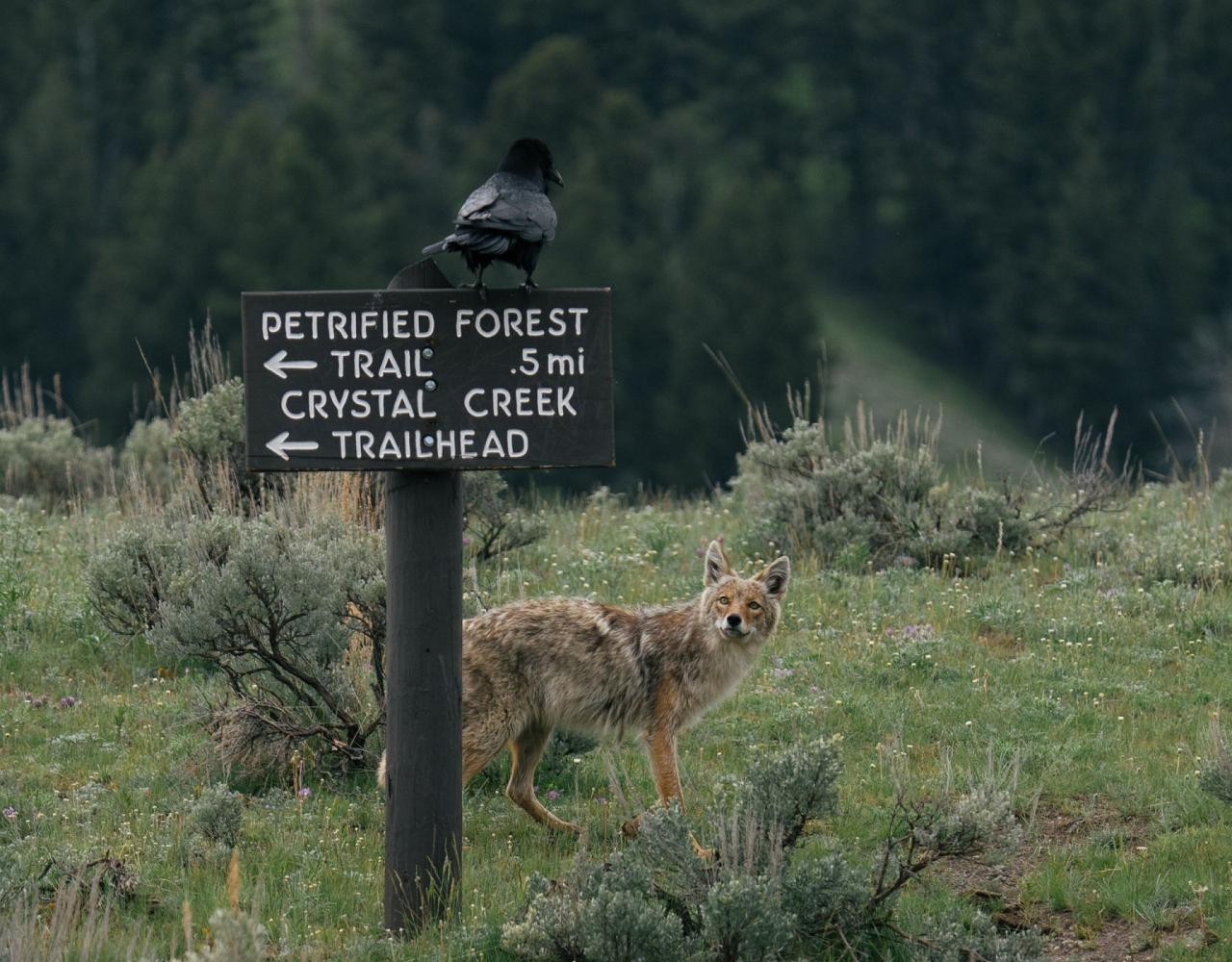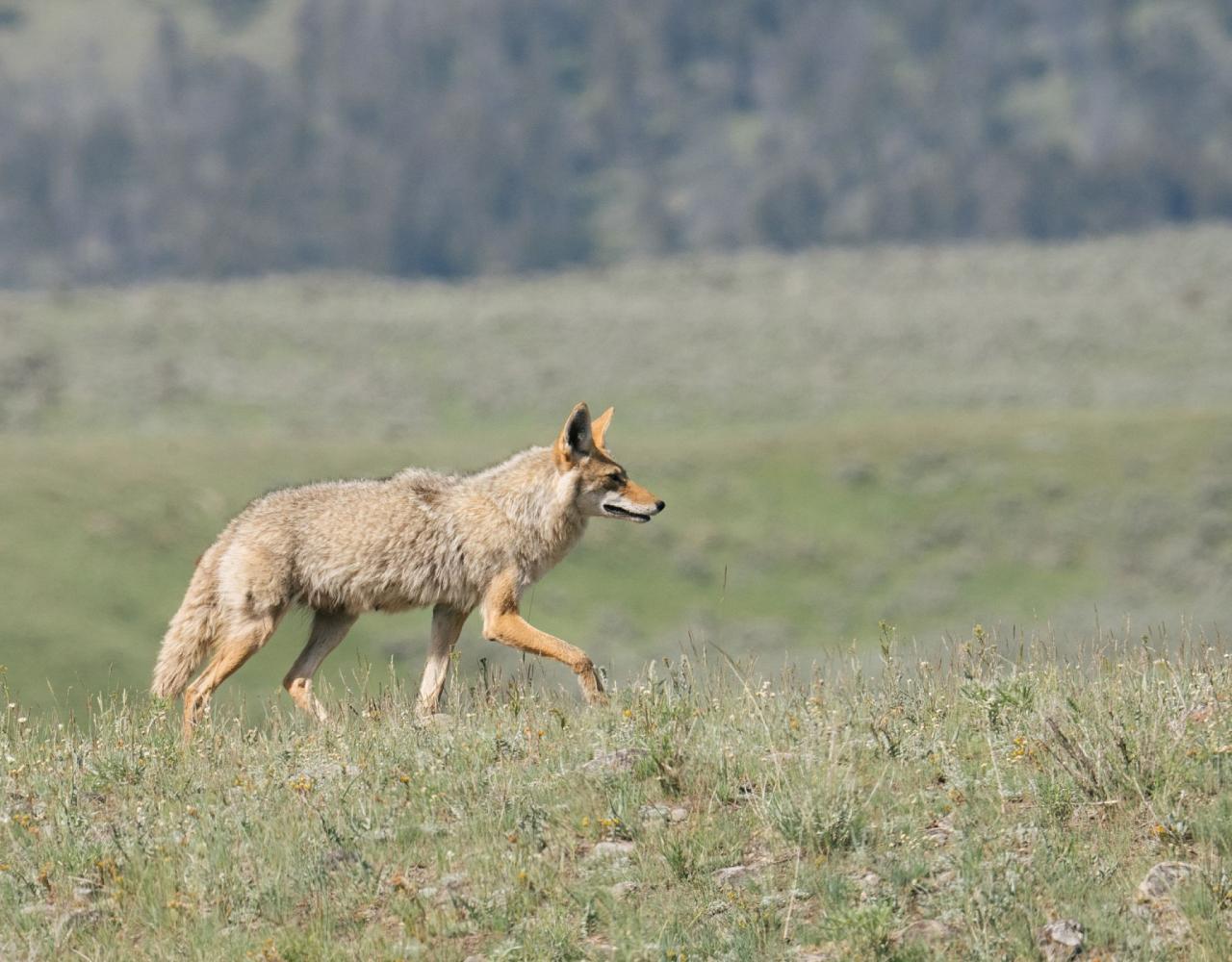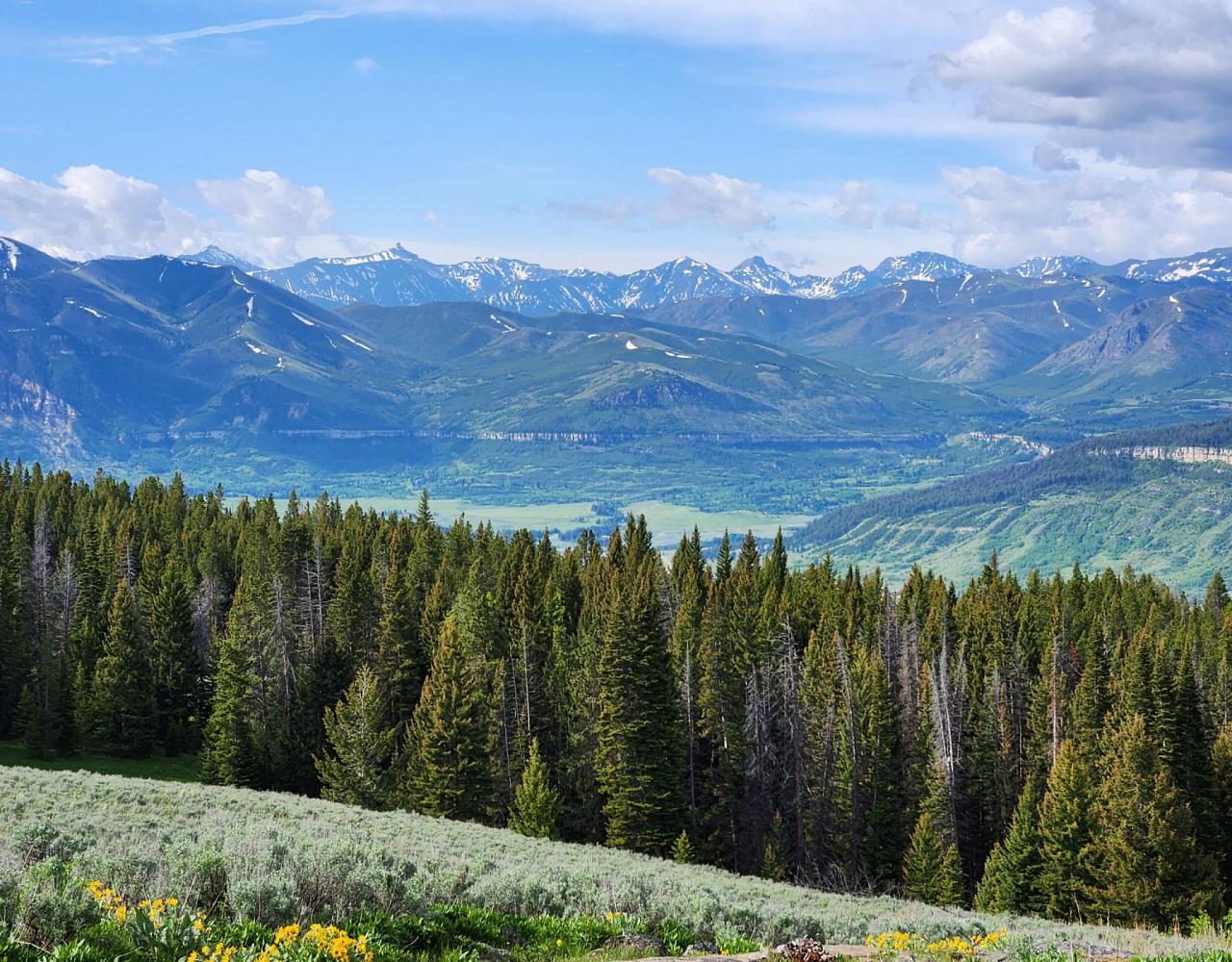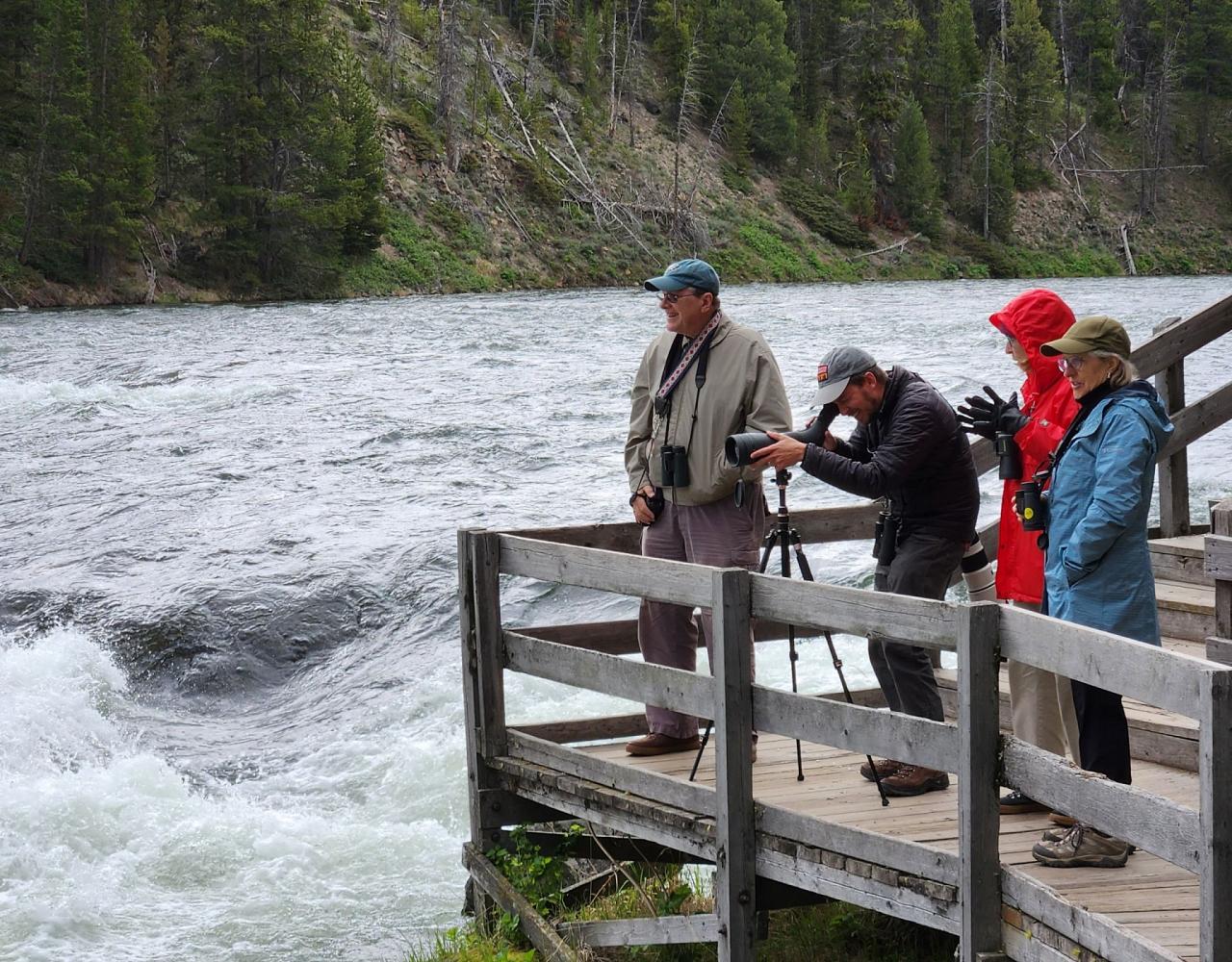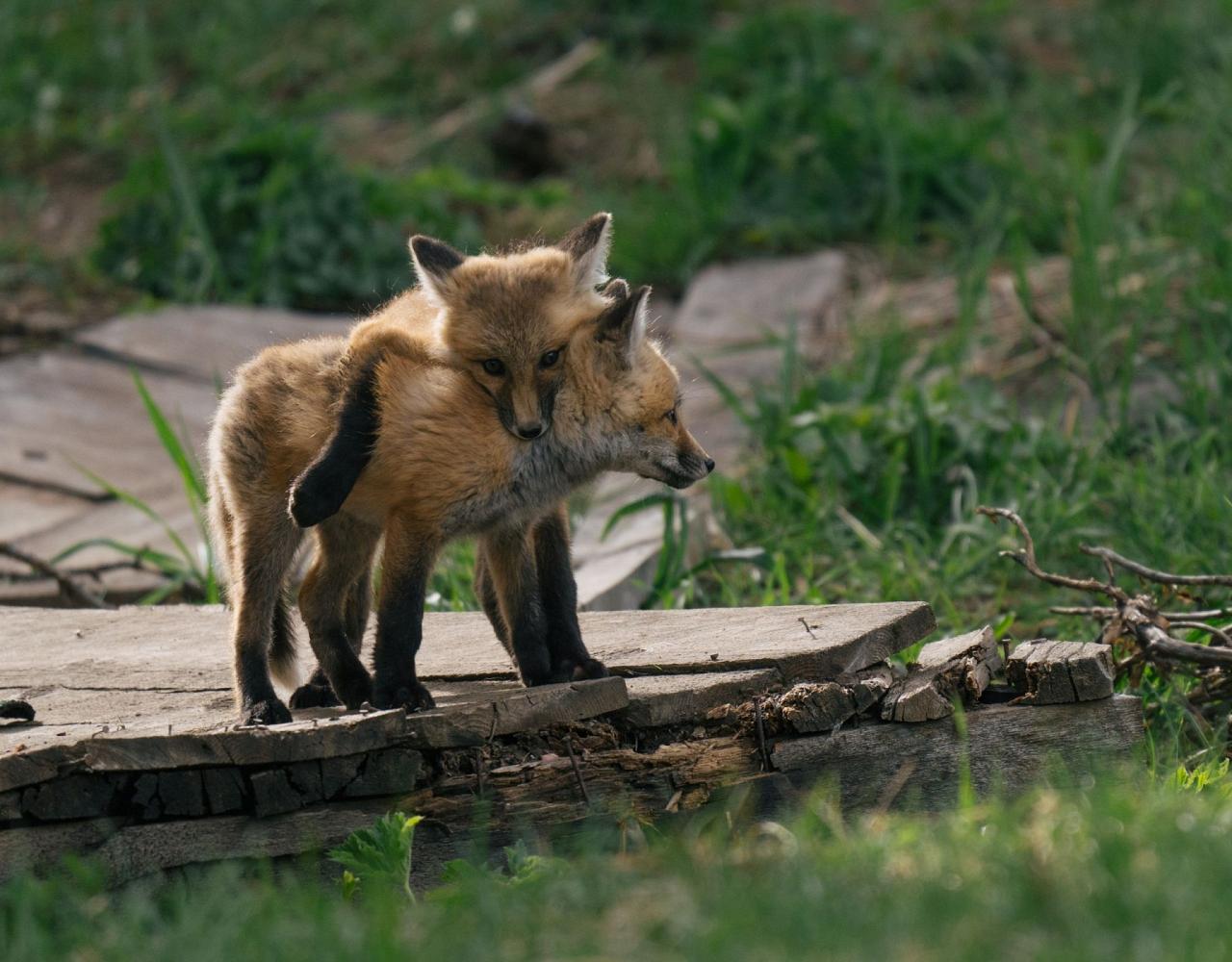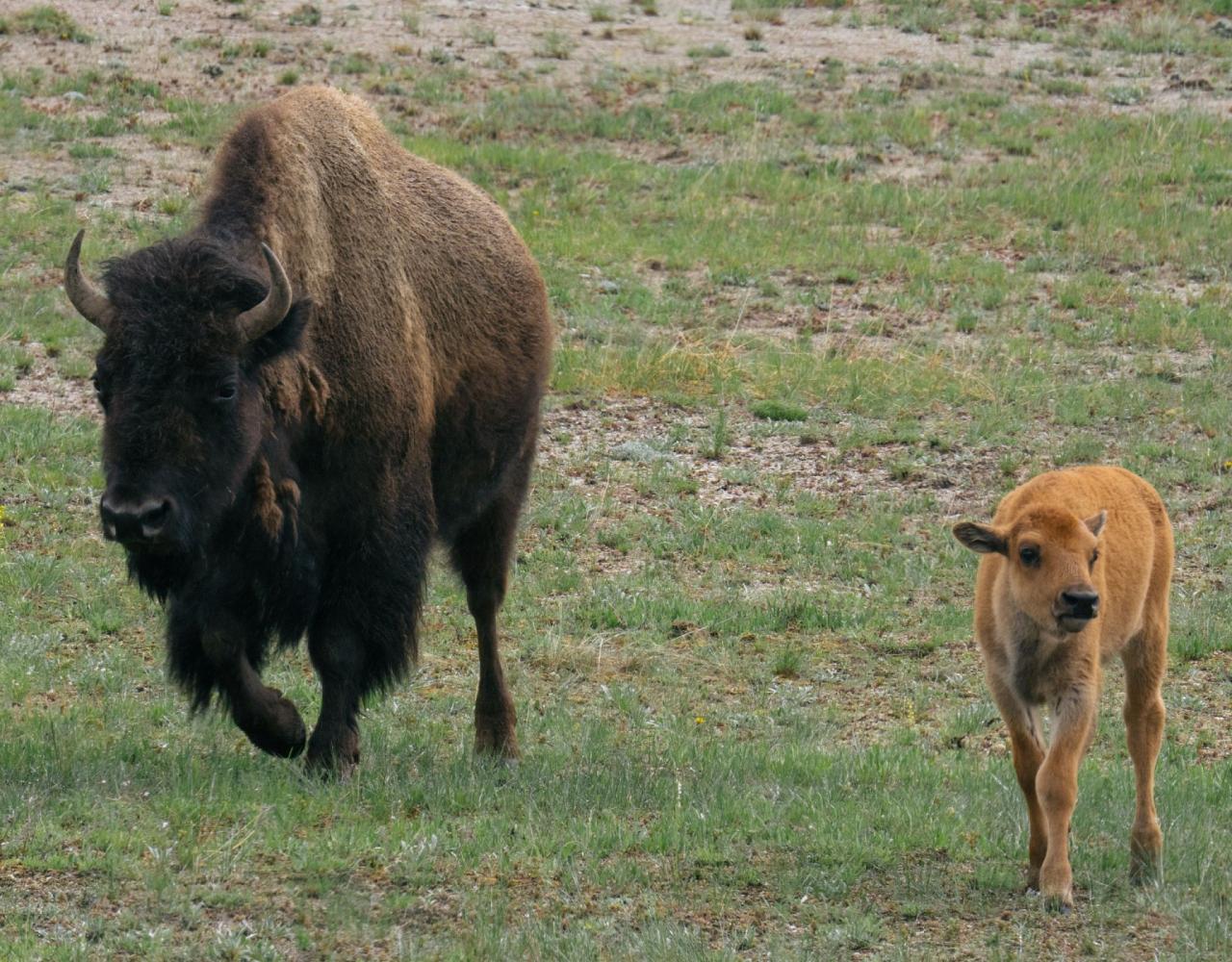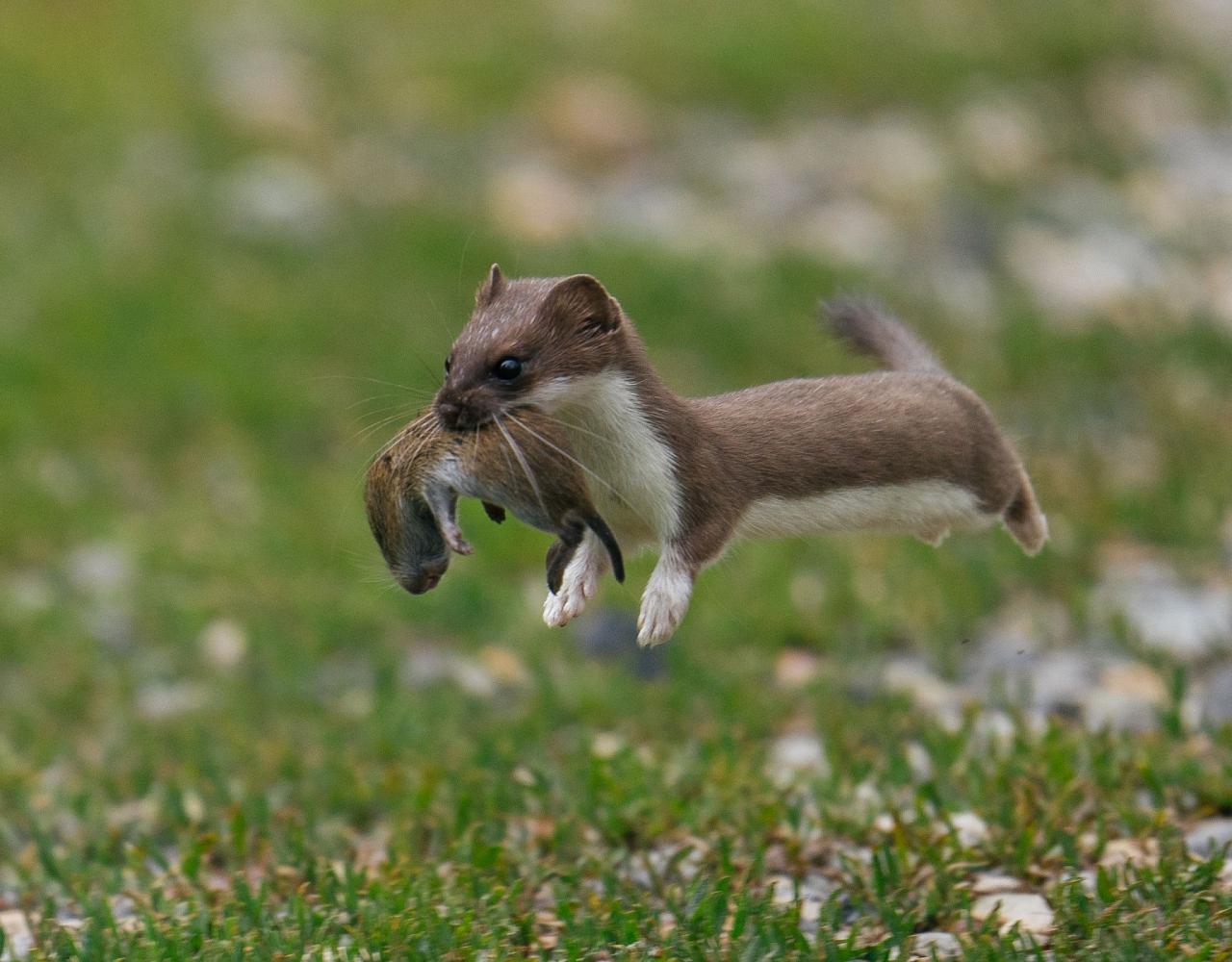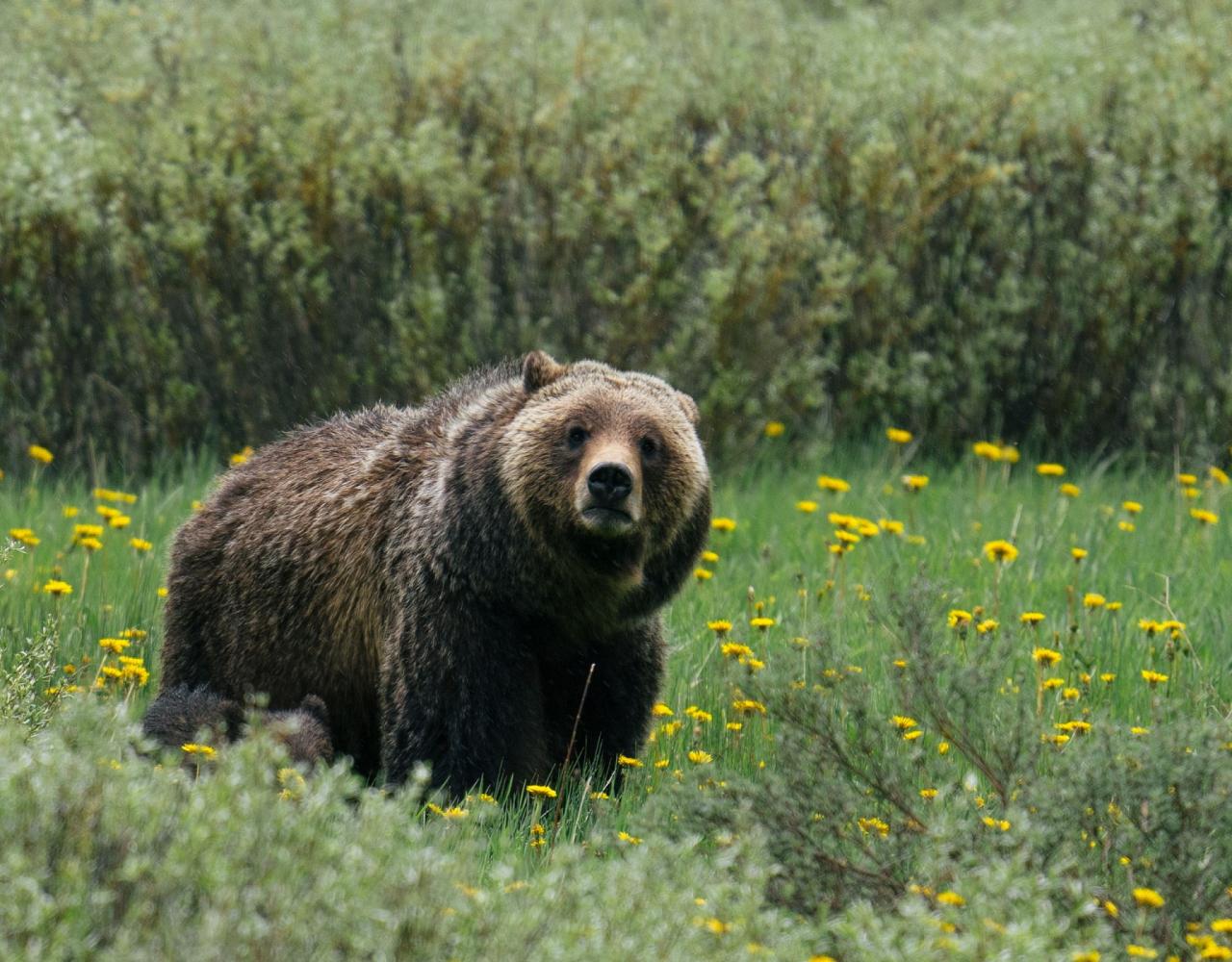- Overview
- Full Itinerary
- Photo Gallery
- Costing
- Travel Details
- Trip Reports
- Guides
- Map
- Know Before You Go
Experience Yellowstone in its very most vibrant season. In the mountains, early June is spring, the time when birds are at their peak of song as they court and nest and the hooved mammals bear their young. The peak of Elk calving occurs the second week of June; our trip is timed to ensure seeing the park’s iconic predators: Black and Grizzly Bears, Gray Wolf, Red Fox, Coyote, and Badger.
In early June few places match Yellowstone National Park’s Lamar Valley for viewing the dynamics of large predators and their prey. Snow in the high country keeps herds of Elk and Deer in the valleys. Predators—particularly bears and wolves—take advantage of this, often in numbers that create real pressure between species. At the same time, prey species are raising young, which are abundant and a joy to see.
We dial in on wildlife viewing in the dawn and dusk hours, while mid-day we offer excursions to the interior of Yellowstone to explore the geyser basins, Hayden Valley, and the dramatic Upper and Lower Falls of the Yellowstone River. Our route to and from Bozeman lets us see some of North America’s finest mountain scenery following the Yellowstone River through Paradise Valley. Western birds are active with song throughout our days, busy in the long-daylight hours of their short nesting season.




- "Could not have been better. Great group, great leaders, great itinerary, always safe and cared for. Learned a lot. Life changing."
- "Wonderful trip with knowledgeable guides. We saw so many large animals and beautiful features of the open landscape."
Tour Highlights
- Experience the American West with fun meals, grand scenery, and wildlife
- Travel up the Madison River where Elk herds congregate with young, a verdant and bird-rich corridor entering the park from West Yellowstone
- Watch for Osprey and Bald Eagle on nests
- Enjoy the steam of Yellowstone’s iconic geysers and marvel at myriad, colorful thermal features
- See the brilliant colors of male Harlequin Duck as they feed in cascading rapids of Hayden Valley
- Take in the arresting beauty of Yellowstone Falls and the antics of American Dipper nesting nearby
- Find Mountain Bluebird and Red-naped and Williamson’s Sapsuckers at their nest holes, and possibly Ruffed or Dusky Grouse as they display
- Watch hundreds of Elk with their calves in the Lamar Valley, spot Mountain Goat and Bighorn Sheep young
- Witness hunting by the park’s great predators, Black and Grizzly Bears, and coming and going from their den sites, Gray Wolves
- Watch as Lazuli Bunting throw their heads back in song and Green-tailed Towhee bring food for their young




Trip Itinerary
Itineraries are guidelines; variations in itinerary may occur to account for weather, road conditions, closures, etc. and to maximize your experience.
Thurs., June 5 Bozeman/Gardiner, Montana | Northern Gateway to Yellowstone
Welcome to Montana! Please arrive in Bozeman no later than 2:00 PM today; afterwards we drive over a mountain pass to Livingston, and then turn south along the Yellowstone River to the northern gateway of Yellowstone National Park. Our drive is through lush agricultural and riparian areas surrounded by the Absaroka and Gallatin mountains. This is classic Big Sky scenery. We are likely to spot raptors, sandhill crane and trumpeter swan. We stop at a few places along the way and arrive in Gardiner with time for you to settle into your room with fine views of the rushing Yellowstone River. Enjoy dinner tonight at a favorite local restaurant.
Accommodations at the Absaroka Motel, Gardiner (D)
Fri., June 6 Wildlife Watching with a Wolf Expert | Lamar Valley
The early bird gets the wolf! This morning we spend time with a real expert from Wolf Tracker, one of the most respected guiding operations in the park. Wolf Tracker has a close relationship with the Yellowstone Wolf Project: a highly successful program that began in 1995 and reaches its 26 year milestone this year. Our Wolf Tracker guide accompanies us today with a picnic breakfast in the field, and a keen eye for all wildlife, but particularly wolves. While we aim to see wolves, we also have good chances for black and grizzly bears, elk, bison, pronghorn and so much more.
In the afternoon, we part ways with our Wolf Tracker guide and enjoy lunch in Mammoth Hot Springs. Afterwards, we take time to explore the terraces taking in the hydrothermal features by boardwalk.
Afterwards we take time to look around the small mountain town of Gardiner with its quaint shops and idyllic scenery. Dinner tonight is at another favorite local restaurant.
Accommodations at the Absaroka Lodge, Gardiner (B,L,D)
Sat., June 7 Swan Lake Flats | Grand Prismatic | Old Faithful Geyser Basin and Other Geyser Attractions
Today we head towards the interior of the park. Swan Lake Flats has several ponds that attract various species of waterfowl and of course, trumpeter swans. We then follow a lush river corridor past Madison Junction and onward to Grand Prismatic Spring where we meander the boardwalk taking in dazzling colors of the largest hot spring in the United States.
Afterwards we head to Old Faithful with its iconic lodge and thermal features. Bison graze in the meadows, Canada geese lounge on the shores of the Firehole River, and bald eagle or osprey may be present and fishing. A boardwalk trail winds through geysers, fumaroles, mud pots, and colorful hot springs passing many of the major thermal features for which the park is known. The river is a good place to watch for dippers, Barrow’s goldeneye, and, if we’re lucky, river otter.
We enjoy a picnic lunch on the deck of the historic Old Faithful Inn and perhaps an ice cream at one of the park stores, then return to Gardiner for dinner.
Accommodations at the Absaroka Lodge, Gardiner (B,L,D)
Sun., June 8 Hayden Valley | Dunraven Pass | Lamar Valley | Cooke City
We say goodbye to Gardiner and head to Yellowstone’s Northeast entrance. Crossing the vast open hills of Hayden Valley we stop for wolves, various waterfowl and muskrat in ponds along the way, making our way down to Lake Butte in search of grizzly bear. Afterwards we turn back towards the Hayden Valley for a stop at LeHardy Rapids to search for Harlequin ducks.
We are sure to visit the Grand Canyon of the Yellowstone with its dramatic Upper and Lower Falls, a scenic highlight for many. En route we may see active Peregrine falcon or osprey at their nest sites, fascinating to watch from above as they are found in the canyon below us. After a quick stop in Canyon Village for lunch, we venture over Dunraven Pass to Tower Fall with hopes for black bear. Then it’s onward to Lamar Valley and through to Cooke City, a small mountain town surrounded by wilderness and the gateway to Beartooth Pass. Tonight we enjoy dinner in Cooke City at one of two favorite local restaurants.
Accommodations at the Alpine Motel (B,L,D)
Mon., June 9 Slough Creek | Lamar Valley
This morning we grab an early breakfast and travel through the Lamar Valley to Slough Creek for wolves, bears, and birding. The tree-lined Slough Creek corridor gives us good sites for riparian species, Williamson’s and Red-naped sapsuckers, and a variety of western warblers. We also take time to look for show-stopping Calliope hummingbird, golden eagle and great horned owl.
Afterwards, we enjoy a picnic lunch and survey abundant wildlife of the Lamar Valley in search of wolves, black and grizzly bears, and all of the hoofed mammal species upon which they prey. At no time is the drama more intense— lush meadows keep the large herds down in the valley during their most vulnerable time: while they are birthing calves. The predators search the meadows, sagebrush flats, new-leafing aspen groves, and sheltered lodgepole pine forests for their prime targets, calves, as well as other prey.
We could have close looks at bison, mule deer, bighorn sheep, elk, and pronghorn, all of which should have young. With luck, we may see red foxes, badger and short-tailed weasel as well.
Accommodations at the Alpine Motel (B,L,D)
Tues., June 10 Beartooth Pass | Top of the World! | Lamar Valley
Today we head to higher elevations, weather permitting. After breakfast we head off for an extraordinary drive; one Charles Kuralt has called the most scenic in North America. Even in late May and June we may have walls of plowed snow near the upper reaches. If we can tear our eyes away from the stunning views of both the Beartooth and Absaroka Mountain ranges, we’re hopeful to see montane and alpine species such as Black- and Gray-crowned Rosy Finches, American Pipit, Horned Lark, Northern Goshawk, Clark’s Nutcracker, yellow-bellied marmot, pika, and other species. Rocky Mountain goat also can pepper the cliffs along our drive.
We descend through lush forests broken by meadows where we have good chances for moose with calves. The pointed peaks of Pilot and Index mark our arrival back to the mountain town of Cooke City, where we enjoy a rest and our lunch before a late afternoon in Lamar Valley to take in its kaleidoscope of wildlife for one last evening.
Over dinner we toast to our grand adventure and relive our favorite moments and species!
Accommodations at the Alpine Motel (B,L,D)
Wed., June 11 Departures from Bozeman
On our final morning we pack up and wander the grounds of our hotel, taking in the sunrise and mountainous views of Cooke City before a cozy breakfast in Silver Gate and one last drive through the park, then onward to Bozeman (about a 3 hour drive) for departing flights. (B)
Cost of the Journey
The cost of the journey is per person based on occupancy: $3490 DBL / $4470 SGL, from Bozeman, MT.
This cost includes: Accommodations for 6 nights, all meals as specified in the itinerary (B=breakfast, L=lunch, D=dinner), airport welcome and transfer, land transportation during the journey, professional guide services, park and other entrance fees, and miscellaneous program expenses.
This cost does NOT include: Round-trip airfare to and from Bozeman, items of a personal nature such as laundry, telephone, drinks from the bar, and gratuities for luggage handling or personal services.
Travel Details
Please plan to make air travel plans only after the minimum group size has been met. We will send you a confirmation email as soon as the trip has been confirmed.
Arrival and Departure Airport: Yellowstone International (BZN) in Bozeman, Montana
Arrival Details: Please plan flights to arrive June 5, 2025, no later than 2:00 PM
Departure Details: Please plan flights to depart June 11, 2025, after 1:00 PM
Travel Tips: If you arrive early, Bozeman is a scenic and fun town to explore. The Museum of the Rockies is an excellent introduction to natural and cultural history. The downtown area is trendy with western-themed shops and restaurants, very walkable. The airport is 10 miles from downtown so depending on your interests, you may want to choose a hotel that offers shuttle service to town, choose a downtown hotel, or rent a car. Taxis and Uber are readily available, too. You will either need to return to the airport by 2:00 PM or be at the Best Western GranTree Inn by 2:30 PM on June 5.
Hotel Recommendations: : Just want to rest up and have the option to take a hotel shuttle downtown? We can pick you up at this hotel: Best Western Plus GranTree Inn (406) 587-5261
If you prefer to stay adjacent to the airport, we recommend: Holiday Inn Express & Suites Belgrade (406) 388-7100 Do you want to splurge a bit and stay right in the downtown area? We recommend: Kimpton Armory Hotel Bozeman(406) 551-7700 or the Element Bozeman (406) 582-4972.
Browse below for trip reports and species lists from past versions of this and other tours from this destination.
Montana
- June 2012
- June 2013
Yellowstone
- June 2011
- June 2012
- June 2013
- September 2016
- September 2017
- September 2018
- September 2019
- June 2021
- September 2021
- September 2022
- June 2023
- September 2023
- May 2024
- June 2024
- September 2024
-
Mason Flint
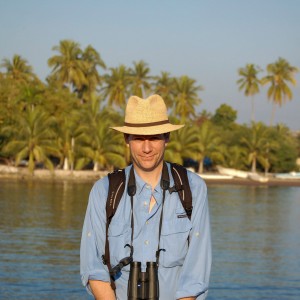
Mason is a New Mexico native who started birding at age 11 when his family moved within walking distance of the Richardson Bay Audubon Sanctuary in Tiburon, California. Here, he became an Audubon Junior Naturalist. His love of birding and travel grew through as he moved with his family to Alaska, Ohio, and Vermont, college on the east coast, and a few years trying to eke out a living as a birder/ski bum in Montana and back in New Mexico.
In desperate need of gainful employment, Mason settled in Seattle where he spent most of his career at Microsoft. Mason was able to feed his habit by adding on a day or two of birding to business trips across the US, Europe, and Asia and travel with his family. His wife Suzy, who loves travel but isn’t a birder, is a good sport and jokes that being married to a birder has given her the opportunity to visit sewage treatment ponds around the world.
Mason retired a bit early in 2015 to help fledge his two sons, squeezing in travel and birding between soccer games and band performances. He was thrilled to finally combine his passions and profession when he joined Naturalist Journeys as a consultant in early 2020. Mason has led field trips in Guyana, Peru, Iceland, Texas, Washington, Wyoming, Southeastern Arizona, Minnesota, and South Africa.Other trips with Mason Flint
-
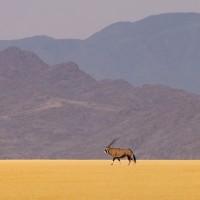 Deltas to Dunes: A Botswana-Namibia SafariSeptember 28 - October 15, 2025
Deltas to Dunes: A Botswana-Namibia SafariSeptember 28 - October 15, 2025 -
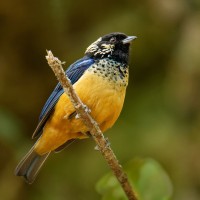 Western Panama: Tranquilo BayNovember 7 - 14, 2025, w/Mt. Totumas extension
Western Panama: Tranquilo BayNovember 7 - 14, 2025, w/Mt. Totumas extension -
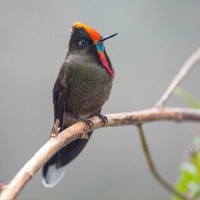 World-class Birding in Colombia's Coffee TriangleJanuary 20 - February 3, 2026, w/Montezuma extension
World-class Birding in Colombia's Coffee TriangleJanuary 20 - February 3, 2026, w/Montezuma extension -
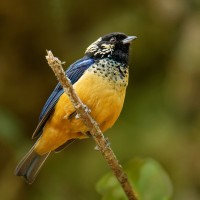 Western Panama: Tranquilo BayMarch 8 - 15, 2026, w/Mt. Totumas extension
Western Panama: Tranquilo BayMarch 8 - 15, 2026, w/Mt. Totumas extension -
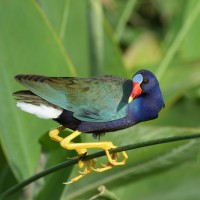 Texas Coast & Big ThicketApril 15 - 23, 2026
Texas Coast & Big ThicketApril 15 - 23, 2026
-
-
Kent Skaggs
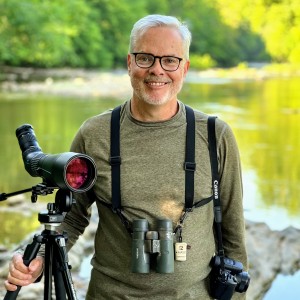
Kent was born and raised in Nebraska and this is where he developed his passion for birds and nature in general. He worked 20 years at Audubon’s Rowe Sanctuary where he helped countless visitors experience the annual spring staging of Sandhill Cranes along the Platte River in south-central Nebraska. While at Rowe, he conducted bird surveys on the sanctuary and coordinated and led birding field trips for the annual Audubon Nebraska Crane Festival. He also spent three seasons leading tours to see displaying Greater Prairie-Chickens and Sharp-tailed Grouse for Calamus Outfitters in the Nebraska Sandhills. Kent and his partner Kathy currently reside in southwest Virginia.
Other trips with Kent Skaggs
-
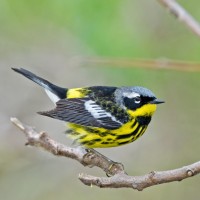 Ohio: The Biggest Week in Birding FULL - See our Isle Royale tour in August!May 6 - 13, 2025
Ohio: The Biggest Week in Birding FULL - See our Isle Royale tour in August!May 6 - 13, 2025 -
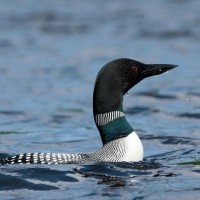 Michigan’s Isle Royale & Keweenaw Peninsula Only two spaces left!August 15 - 23, 2025
Michigan’s Isle Royale & Keweenaw Peninsula Only two spaces left!August 15 - 23, 2025 -
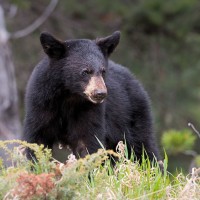 Vancouver Island: Coastal Birds, Bears & WhalesSeptember 3 - 11, 2025
Vancouver Island: Coastal Birds, Bears & WhalesSeptember 3 - 11, 2025 -
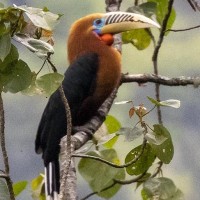 Biodiverse Bhutan: Birds, Mammals & Beyond FULL - Check out Southern India’s Western Ghats!November 5 - 20, 2025, w/Panna Tiger Reserve extension
Biodiverse Bhutan: Birds, Mammals & Beyond FULL - Check out Southern India’s Western Ghats!November 5 - 20, 2025, w/Panna Tiger Reserve extension -
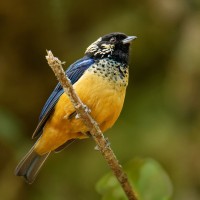 Western Panama: Tranquilo BayJanuary 17 - 24, 2026, w/Mt. Totumas extension
Western Panama: Tranquilo BayJanuary 17 - 24, 2026, w/Mt. Totumas extension -
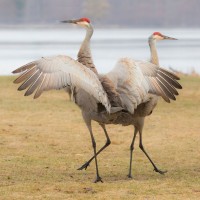 Platte River Cranes: A Migration SpectacularMarch 14 - 20, 2026
Platte River Cranes: A Migration SpectacularMarch 14 - 20, 2026 -
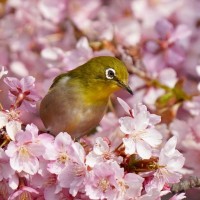 Spring in Japan: The Southern Islands FULL - Check out Island of Wonder: Birds & Nature of Sri Lanka!April 1 - 14, 2026
Spring in Japan: The Southern Islands FULL - Check out Island of Wonder: Birds & Nature of Sri Lanka!April 1 - 14, 2026
-
Essential Information +
Packing List +
Suggested Reading List +
Useful Links +
Photo credits: Banners: Grizzly Bear (Wes Larson), Long-billed Curlew (Hugh Simmons), Mountain Bluebird (Wes Larson), Rocky Mountain Goat (Hugh Simmons), Pronghorn (Hugh Simmons), Norris Geyser Basin (Hugh Simmons) Thumbnails: Great Gray Owl (Greg Smith), Calliope Hummingbird (Wes Larson), Black Bear (Wes Larson), Western Tanager, Red-tailed Hawk (Hugh Simmons), Red Fox kits (Wes Larson), Badger (Wes Larson), Wilson’s Warbler (Wes Larson)







